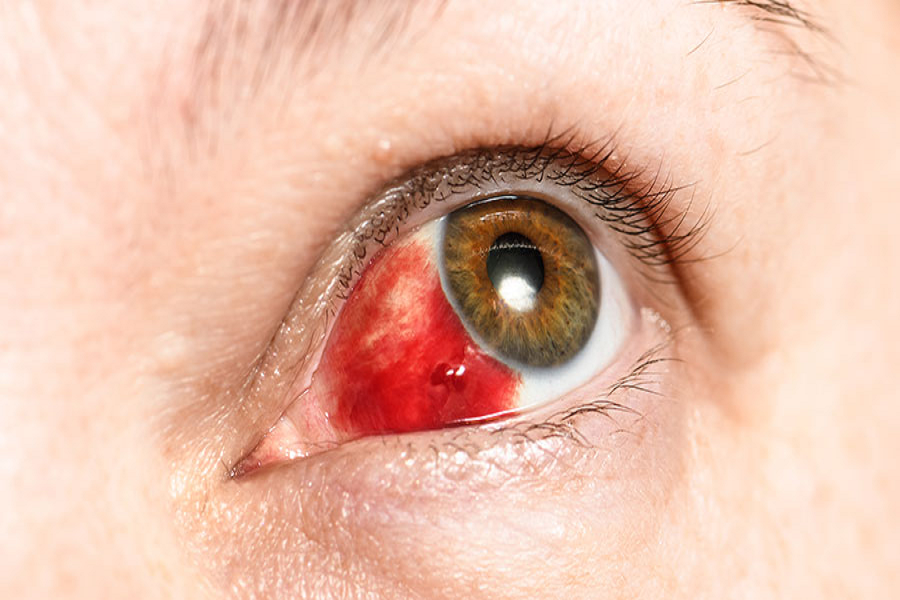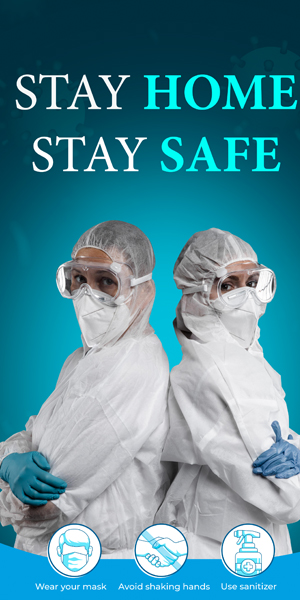A subconjunctival hemorrhage occurs when a blood vessel in the eye breaks, causing bleeding into the space beneath the conjunctiva. The conjunctiva is the thin, transparent layer covering the eye, and it is rich in blood supply by multiple tiny vessels. When one sneezes, strains while lifting heavy objects, coughs, or vomits too hard, there is a sudden increase in pressure within the eye, causing the tiny blood vessels to break. People with diabetes, high blood pressure, blood clotting disorders, or if they are taking any blood thinners such as aspirin and warfarin are at an increased risk of developing subconjunctival hemorrhage.
As the bleeding does not involve the inside of the eye, vision is usually not affected. In most cases, people do not notice that they have a subconjunctival hemorrhage until they look in a mirror or until someone notifies them about it. People normally do not experience any symptoms, although some have reported a scratchy feeling on the surface of the eye. The area of bleeding may expand in the initial 24- 48 hours, then it will slowly fade or turn yellow as it heals. Depending on the area of involvement, a subconjunctival hemorrhage will heal on its own without any treatment. This process can take anywhere from a few days to a few weeks.
There are a few occasions where one should be worried about bleeding in the eye. First, if the red spot remains or does not show any improvement even after a week or two, an expert opinion from a healthcare provider has to be caught. This is to look for the possibility of a blood clotting disorder or an eye injury that has failed to heal on its own.
Bleeding may occur after an injury, such as rubbing the eye roughly, having foreign objects in the eye, and even removing or putting in contact lenses. If you notice a bleed right after these occasions, you should see a doctor for a comprehensive check. These injuries can lead to a conjunctival tear, which can affect your vision and thus warrants treatment. At any point, after you notice a subconjunctival bleed and you start having symptoms such as pain in the eye or eye itchiness, advice from a doctor should also be sought. If the blood expands over the colored part of your eyes, which is the iris, you should also seek treatment immediately.
Other symptoms that require more comprehensive assessment:
- Eye itchiness
- Eye pain
- Blurring or change in vision
- Eye discharge
- Significant photophobia (unable to look at bright lights)
- Headache
It is also fairly uncommon for a subconjunctival hemorrhage to occur more than once. If you notice that it has happened again after the first episode, you should seek further advice. There are many tests that can be done to look for the possibility of any underlying issue, such as a bleeding disorder.
A subconjunctival hemorrhage is a common condition, and it occurs more frequently among people of the increasing age group due to risk factors such as diabetes and hypertension. It usually does not cause any symptoms, and it resolves on its own within 1-2 weeks. However, if you notice that it remains the same after 2 weeks, if you develop other symptoms, or if it occurs more than once, you should seek help. A comprehensive health screening for the eyes is recommended for adults between 18 and 60 years old, at least once a year.








Leave a Reply